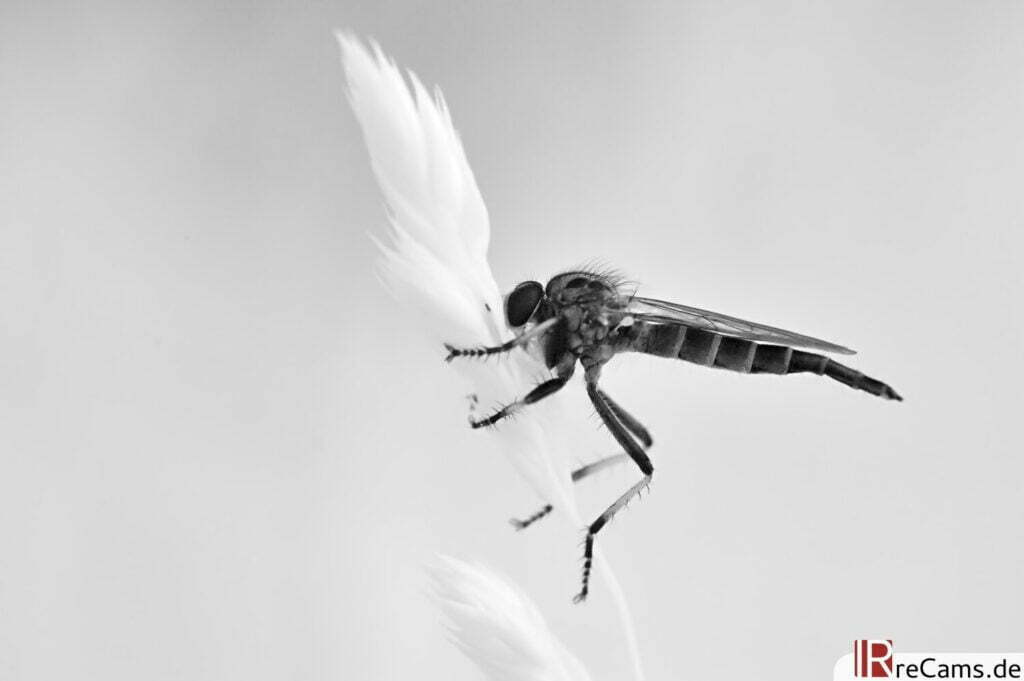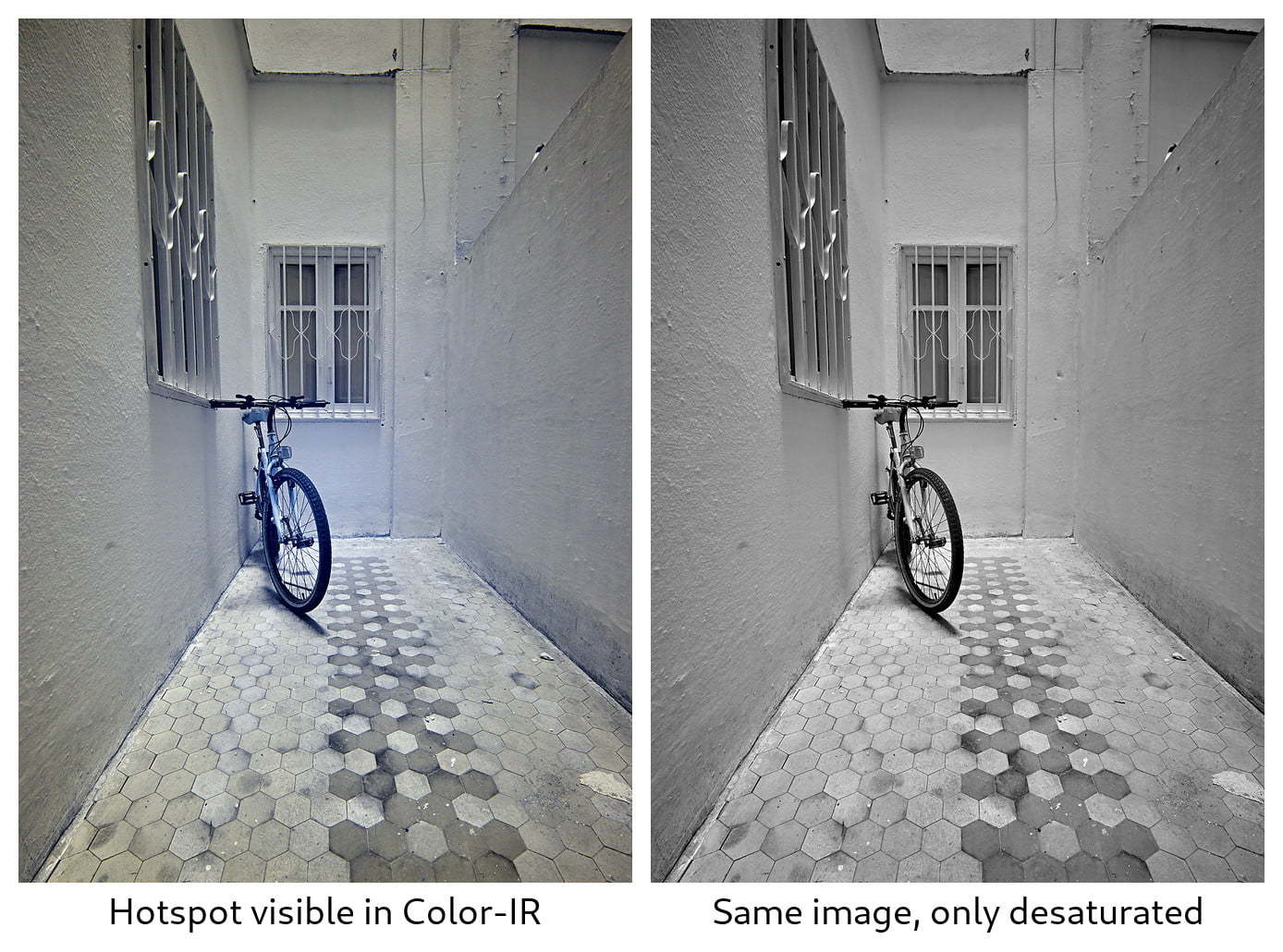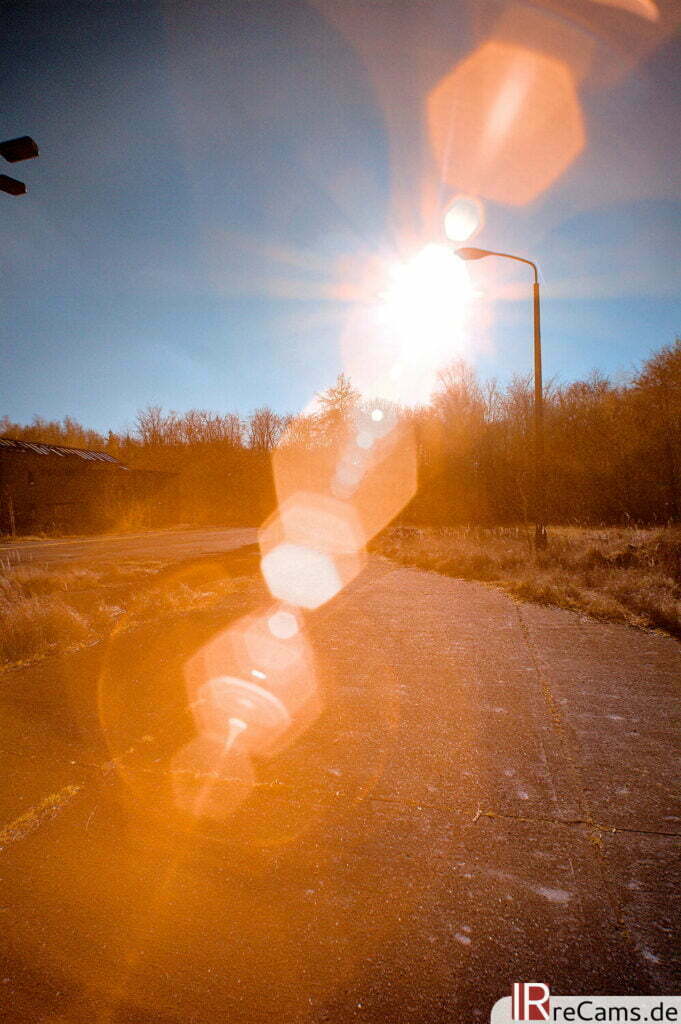Ihr Warenkorb ist derzeit leer!
Infrared Hotspot and other curiosities
All lenses used for photography (with a few exotic and very expensive exceptions) are designed and optimized for the visible range. This concerns sharpness, focus and the coating to protect against lens flares in backlight - probably best known is the phenomenon of infrared hotspot. Nevertheless, excellent results can be achieved with most lenses even in the IR range. Unfortunately, you can see very few of these flaws in a lens before actually testing it. However, some problems are recurring with many lenses, so let's take a look at how we can work around them.
Loss of sharpness and detail
Die optische Konstruktion unserer Objektive ist für den sichtbaren Bereich gerechnet. Grundsätzlich ist bei jedem Objektiv ein gewisser Schärfeverlust messenbar wenn es für die Infrarot Fotografie genutzt wird. Bei den meisten Objektiven ist das so gering, dass man kaum darüber sprechen muss. Viel schlimmer ist oft der Schärfeabfall zum Bildrand – dies tritt vor allem bei Weitwinkel und Ultraweitwinkel Objektiven auf. Um die Schärfe allgemein zu verbessern ist es hilfreich die Blende zu schließen, wie in der “normalen” Fotografie auch. Allerdings führt das wieder zu anderen Problemen. Zum einen kann das Abblenden einen Hotspot hervorrufen, zum andern ist das langwellige Infrarot Licht viel eher von Beugungsunschärfe betroffen als der sichtbare Bereich. Generell sollte die Blende bei IR Aufnahmen nur so weit wie unbedingt nötig geschlossen werden.
Autofocus in Infrared Photography
Correctly functioning autofocus can be more critical than image sharpness. With modern mirrorless cameras, there are usually no problems or surprises here. But with digital SLR cameras, you have to pay attention to a few things.
Für eine Aufnahme im Infrarot Bereich muss “etwas näher heran” fokussiert werden als im sichtbaren Spektrum. Auf alten manuellen Objektiven war dafür oft extra eine rote IR- Markierung am Fokusring angebracht. Im AF- Zeitalter ist das Fokussieren nicht mehr Aufgabe des Fotografen sondern der Kamera – und das soll möglichst auch in der digitalen Infrarot Fotografie so sein. Bei einem professioinellen Infrarot Umbau wird der Autofokus der Spiegelreflex Kamera einmal justiert, damit stellt der AF der Kamera fortan alle Objektive für den IR Bereich korrekt scharf. Ein kompletter Infrarotumbau ist die einzige Möglichkeit den Autofokus auch an einer DSLR nutzen zu können und somit überhaupt schnell und sicher zu fokussieren.

A quirk of older lenses is often the occurrence of backfocus when using a DSLR. The difference between visible and IR light, which is compensated on the camera by the focus adjustment, is not constant for all lenses. It depends on the optical construction of the respective lens (mainly on the quality of the aspherical correction) and possibly on the set focal length (for zoom lenses). With most modern autofocus lenses, there should be no problems with autofocus. The older a lens is, the more likely it is to be poorly aspherically corrected or not aspherically corrected at all. However, there is no rule here, unfortunately again only trying helps.
Einen perfekten Fokus kann ich bei Nutzung einer DSLR somit leider nicht für jedes Objektiv versprechen. Um auch mit “Problem- Objektiven” durchweg perfekte Ergebnisse zu erhalten ist es am sinnvollsten, eine (DSLR-) Kamera mit Kontrast Autofokus über den Sensor zu nutzen. Die Fokusdifferenz ist bei Kontrast- AF über den Sensor kein Problem, da dieser bereits das IR- Licht sieht und akkurat scharf stellt. Bei spiegellosen Systemkameras ist die Fokuslage grundsätzlich unproblematisch, diese Kameras arbeiten durch ihre Konstruktion permanent im “LiveView Modus”.
Infrared Hotspot and countermeasures
A very unpleasant image flaw is the hotspot. A hotspot is a circular area in the center of the image that is brighter and therefore stands out clearly. Often the blue channel of the image is more affected by this, which is why a hotspot appears as a color blob to make it even worse.
The hotspot is caused by the insufficient coating of the lenses in the IR range, which makes it difficult to work around. If a lens is affected, it may help to experiment with different apertures. The intensity of the hotspot increases when stopping down, another reason not to stop down the lenses too far. In addition, backlight situations can amplify the hotspot - the use of a lens hood should therefore be mandatory at least for the affected lenses.

Once a hotspot is in the image, you can try to retouch it out while editing your image. Even if this seems possible, it is often a hard and time-consuming process. A very fast and effective technique is the conversion to a black and white image. The hotspot occurs mainly with color IRs, in a monochrome image it shows up only very weakly or not at all.
Lens flares and backlight
In backlight, the global image contrast of an IR image drops very quickly. Shadow areas become dull and muddy, even hotspots can be promoted. Besides the simple rule of not taking pictures in backlit situations, the first means of choice is to shade the front lens with care. This can be done with a hand or by putting on a sun shade.

Finally, due to the ineffective coating of most lenses in the IR range, lens flares occur very quickly in backlight situations. This phenomenon can be avoided or at least reduced by avoiding backlight situations, by using a sun shade and possibly by stopping down. Another possibility is to creatively include the lens flares in the image composition! There are extra tools in many image processing programs that artificially create such an effect. We have integrated it right away.
Image problem prediction
Whether a lens produces image errors, and if so, which ones, can unfortunately not be seen beforehand. Either you try it out yourself (remember the 14-day right of exchange when buying a lens, used lenses can usually be resold without loss of value), or research the experiences of other photographers before buying the lens. On the Internet you can also find a few databases that have summarized many user experiences - this gives you at least a clue as to which lenses might be suitable before you buy them.
